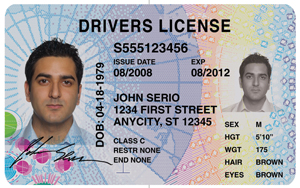Secure Identity Alliance says physical ID security matters for digital ID
Group offers tools designed to help test security of credentials
15 January, 2021
category: Digital ID, Government
Even with digital ID on the rise in 2021, physical credentials still play a major role in authentication — and in many ways will be closely tied to their virtual cousins. And that means the security of those physical identification documents cannot be taken for granted, according to a recent report from the Secure Identity Alliance.
The group points out that even with pandemic-fueled moves toward more types of contactless transactions, physical ID credentials will continue to play vital roles in the authentication space. Rather than simply being replaced by new digital formats, they continue to be the pre-requisite for the overall success of many schemes, the Secure Identity Alliance says.
Digital ID and physical complementary
Around the globe, the group says governments and national ID issuers continue to use physical ID documents and cards for a variety of applications and services. Portable, easy to present and validate by authorities – independent of the availability of connectivity or mobile network coverage – they continue to offer the ideal solution for citizens who can’t or won’t carry a smartphone or live in locations where mobile coverage is limited.
The Secure Identity Alliance provides two online self-assessment tools that enable public bodies to benchmark and plan their current and future deployment projects against proven best practices.
Covering every aspect of the ID document lifecycle – enrollment, issuance, document design, personalization and support processes – the Secure Identity Alliance’s eSAM and eSEC evaluation tools enable national schemes to also evaluate the physical security features of current documents, understand what’s required to build a secure eDocument, or evaluate the impact of future design changes on overall document security.
ID security evaluation tools
The Secure Identity Alliance developed the eSecurity Awareness Model (eSAM) tool to help governments and issuing authorities understand what is required to build a security chain that covers everything from application, entitlement, personalization and issuance. Alongside evaluating existing programs, the tool makes it possible to try out different scenarios and see the effect on the security chain.
The eSecurity Evaluation (eSEC) model, meanwhile, supports the evaluation of the physical security features in an eDocument. Organizations can select the document type, list the security features of a current or planned document, and answer questions about the design process.
The tool provides a benchmarking score for known strengths, and the ability of a document to counter potential threats is then provided. Different protection profiles can be set so that products can be evaluated against a variety of potential security threats, the combined security strength of documents can be verified, and potential again and wear on security features evaluated and tested.
The new year promises to be another big one for digital ID — and the security of physical credentials will certainly play a role in that. After all, as the Secure Identity Alliance points out, the drive to digital does not eliminate the need for physical identity documents. Even Estonia, one of the most connected and digitalized countries in the world, still deems the physical credential as necessary.




